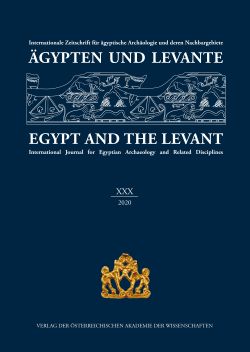
Ägypten und Levante 30, pp. 179-202, 2020/12/29
Internationale Zeitschrift für ägyptische Archäologie und deren Nachbargebiete
International Journal for Egyptian Archaeology and Related Disciplines
Jubiläumsausgabe – 30 Jahre Ägypten und Levante
Anniversary Edition – 30 Years of Egypt and the Levant
Results of archaeobotanical investigations from the 2009–2014 excavations of the joint Polish-Slovak-Egyptian mission at the site of Tell el-Retaba have previously been reported in Ä&L.2 This article provides an update and discussion of results from excavations conducted in 2015, 2016, 2017 and 2019 in Area 9, within the Third Intermediate Period settlement.3 It has been well-established that plant macro-remains are abundant and generally well-preserved at Tell el-Retaba, and they offer a wonderful opportunity to examine changing patterns in the complex relationship between plants and people over at least one thousand years. Analysis of the charred plant archaeobotanical assemblages in the town reveal that wood, sheet/goat dung, and cereal processing byproducts were all used as fuel in households, and that the animals had consumed a sedge-rich diet.
Keywords: Archaeobotany, Cereal processing, Cereal chaff, Weeds, Dung, Fuel